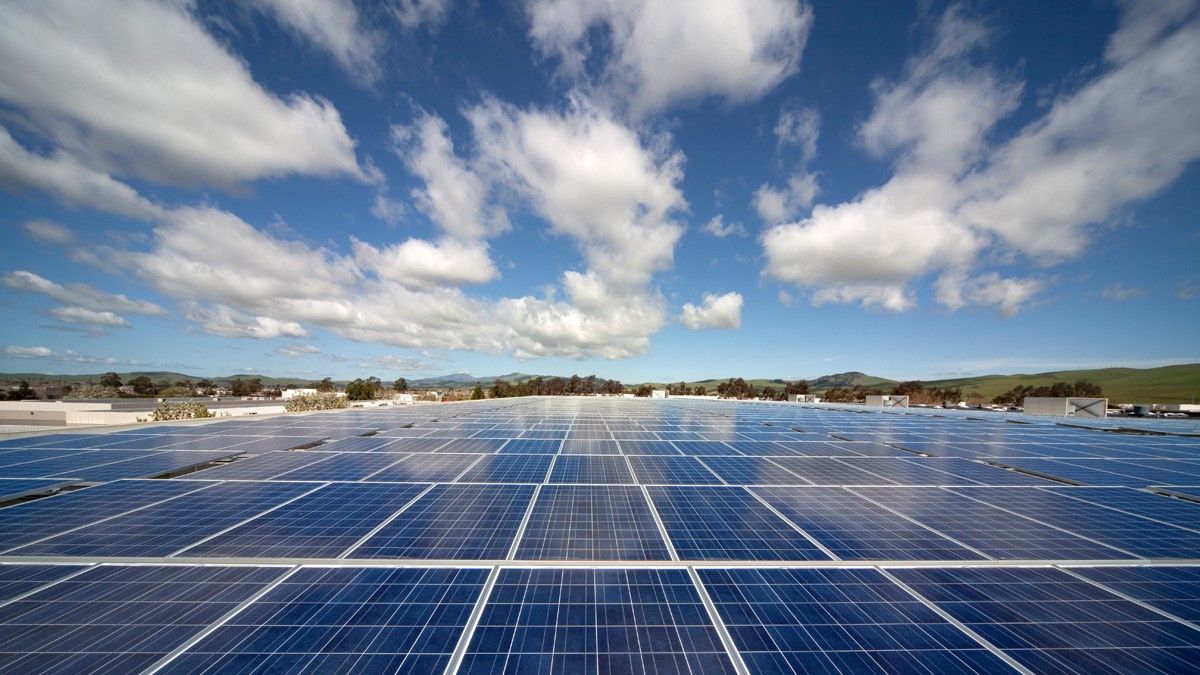While the world has been going crazy, solar has quietly tipped over the edge and kicked oil and gas off the cliff of history.
A new scientific review finds that scientists are dramatically underestimating the efficiency and power of solar panels, because their data is at least seven years old.
And that’s why most of them have managed to overlook a startling fact: For every unit of energy invested, solar can now generate the same if not more energy than oil and gas.
It will take a while for the implications to really impact our societies — there are regressive political and fossil fuel-centric forces standing in the way. But the new evidence is unavoidable: they are doomed.
The study published in November in Renewable and Sustainable Energy Reviews looks at 29 studies which compare the energy generated by solar photovoltaics (PV) to the energy needed to create and install the panels.
By harmonizing all the data, the peer-reviewed study was able to calculate a more accurate figure for the amount of energy solar PVs are able to generate today.
The findings are astonishing: due to the lag in data used by scientists to analyze these issues, most studies fail to capture how far solar power has actually come. Solar is likely double in power what was previously thought, putting it on par with oil.
Solar: twice the power in half the time
“Energy input costs are typically overestimated as recent technological improvements are not captured,” the study concludes, recommending that future studies should “use recent data reflecting up-to-date technological standards.”
Study author Rembrandt Koppelaar, a doctoral researcher at the Center for Environmental Policy, Imperial College London, said that his “best estimate” of how well solar technology works today derived from the studies that use data from 2009 onwards.
This data shows that solar is able to generate 14 times the energy invested to create the panels — “roughly double” what most studies are currently saying.
His other finding is that it only takes 2 years for the same quantity of energy used to create the panel, to be generated by the panel itself. This, he said, is “approximately half” of the value put forward in the literature.
Old data underestimates solar
“Only 5 out of 29 studies use recent data,” said Koppelaar:
“A study published in 2015 or 2016 can get away with using data that is 10 years old to assess the capability of a technology.”
He gives an example of one paper on solar PV “which uses data that comes from 1998.”
In other words, the figures circulating in the scientific community are often describing solar technology that is decades old. When the data is examined properly, a different picture emerges. Solar panels are about twice as powerful than usually assumed: potentially more powerful than oil.
Oil and gas now worse than solar
A major study by the Royal Society of London recently calculated that oil and gas production generates roughly 15 times the energy invested. It warns that this is now declining due to the accelerating dependence on lower quality unconventional sources, which are more expensive and harder to get out the ground.
In the US, for instance, oil and gas now generates roughly 11 times the amount of energy invested; and for most unconventional oil and biofuels, the figure is 10.
This means that according to the new meta-assessment by Koppelaar, if solar power can produce up to approximately 14 times the amount of energy invested, it is already able to produce more energy than oil and gas for every unit of energy invested.
Crappy oil, crappy economy
The author of that study, petroleum engineer Professor David Murphy of Northern Illinois University, wrote:
“… as the EROI of the average barrel of oil declines, long-term economic growth will become harder to achieve and come at an increasingly higher financial, energetic and environmental cost.”
The decreasing quality of oil as a resource is therefore playing a hidden role in undermining the scope for economic growth. If the world doesn’t transition fast enough to more robust energy sources like solar, which are now producing more energy per unit invested than oil, the economy will inevitably get worse.
Solar revolution is inevitable
For much of the world, solar panels are likely to be able to produce even more energy. Koppelaar said that about 85% of the world’s population resides in areas that receive a significant degree of sunlight:
“In Central and South America, Africa, the south of the United States, most of Asia and Oceania, the energy ratio of 14 would be seen as a ‘low value’.”
And this situation is only going to continue. Solar power is pitched to become more efficient and cost-effective in energy production in coming years, while oil and gas will decrease in quality the more we deplete global reserves.
Koppelaar said that the efficiency ratings he used for his study — between 14 and 16% — were very conservative:
“We are moving towards much more efficient panels. 21% are the best efficiency on the market right now. And it is within reach to have 30% efficient panels by 2040 and probably before that, based on new technology designs.”
In short, naysayers who dismiss renewables for being inferior as a source of energy to oil have another thing coming. Koppelaar’s new paper shows that solar power is already beating oil and gas, and will only get better.








